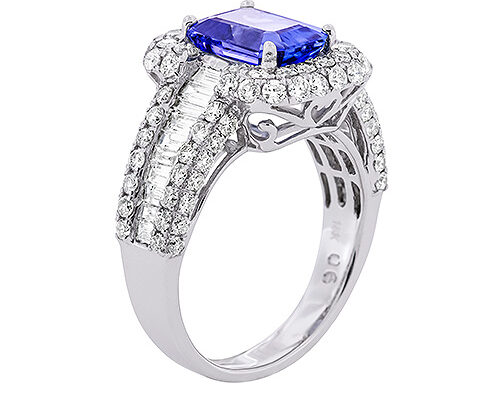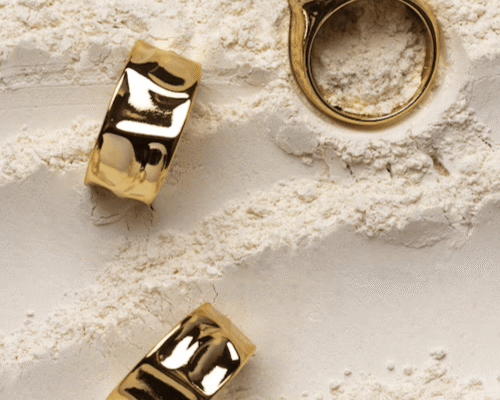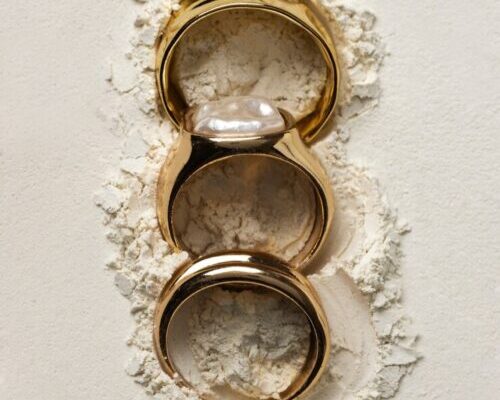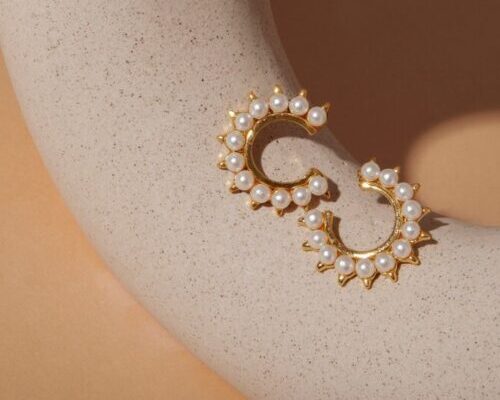Taking beautiful jewelry photos for ecommerce can help you sell more items online. Clear, bright,…

Beginner Tips for Jewelry Photography Editing
It’s every fashion and jewelry industry’s goal to portray their subjects in the best light. This is to convince customers to buy their products and recommend them to friends and colleagues. However, making jewelry shine and sparkle in photos may not be that easy.
Raising your product’s image quality requires different techniques–targeting the hues, shadows, background, and other properties. Luckily, this article will tackle the common post-processing methods for jewelry photography. We’ll give you tips and tricks on how to highlight the unique design of each jewelry piece beautifully.
1. Brightness and Contrast Adjustment
Adjusting the brightness and contrast can greatly impact every picture and instantly improve them. It will highlight your jewelry’s best features and give it a glamorous look. This configuration also sets the mood for your photo. It can either make it elegant or dull-looking, depending on how you set the brightness and contrast.
Overall, you can also play on white balance, saturation, and image sharpness. Elevate your jewelry photos into gorgeous and striking masterpieces by applying the correct adjustments.
2. Image Color Correction and Editing
This post-production method is the key to producing attractive jewelry images. It’s basically the process of applying correct hues to your subject, making it more realistic. When color correcting, you may choose which color to highlight or treat. Furthermore, you can convert white gold jewelry into other metals and vice versa.
A good photo editor will never skip color correction. Color editing must also be done with professionalism. If you aim to get the perfect shade and brilliance of your jewelry picture, this technique must belong to your editing priorities.
3. Shadow Creation
If brightness and contrast adjustment can set the mood for your images, so is shadow creation. In fact, in every jewelry retouching, a natural shadow effect is mandatory. It adds dimension and depth to a 2D image and makes it pop.
Moreover, shadow effects improve your product’s overall appearance, enticing customers to buy and increase your sales. Just have a practiced eye and extensive knowledge of Photoshop tools, and you’ll surely master the trick.
4. Background Removal
The normal setting for a jewelry photo is either a black or white background. Unlike portraits, colorful and playful backdrops don’t apply to product images. It may take the subject out of focus and lessen your image’s professional appearance. If you try to browse a jewelry image right now, you’ll see that most pictures are attached with a plain, simple background.
In an e-Commerce standard, products will most likely stand out when they have uncomplicated backgrounds. It will make your subject look elegant and attractive. Plus, your customers are free of any distractions, convincing them more to buy your precious gem.
5. Jewelry Polishing
Spots, dirt, and sharp edges can’t be prevented in your final output. And unfortunately, these little blemishes can ruin your entire photo. Therefore, it’s a general rule to remove unwanted spots and dirt on your jewelry piece. You can also correct the stones’ sharp edges using Photoshop’s Unsharp Mask tool.
Ultimately, the jewelry polishing technique will help you achieve clear and amazing visuals–free of spots and any defects.
Conclusion
There are various types of jewelry: diamonds, wedding rings, necklaces, pendants, and pearls. But whatever jewelry piece you’re retouching, you must consider every detail–from jewelry texture to the stones’ sparkle.
Follow the tricks and tips we’ve listed in this article and make your jewelry photos shine like a star!



